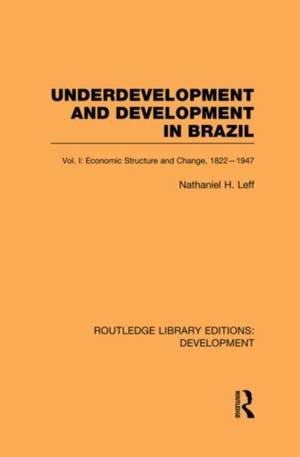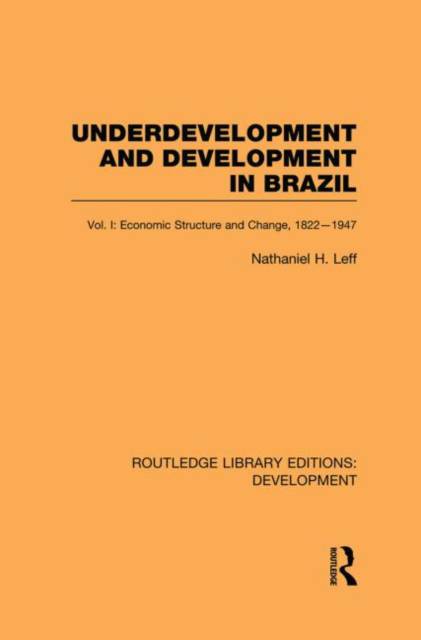
- Retrait gratuit dans votre magasin Club
- 7.000.000 titres dans notre catalogue
- Payer en toute sécurité
- Toujours un magasin près de chez vous
- Retrait gratuit dans votre magasin Club
- 7.000.0000 titres dans notre catalogue
- Payer en toute sécurité
- Toujours un magasin près de chez vous
Underdevelopment and Development in Brazil
Volume I: Economic Structure and Change, 1822-1947
Nathaniel H LeffDescription
First published in 1982, this work offers an analysis Brazil's long-term economic history and development, spanning the period from independence to post-war industrial growth. The book focuses upon the classic problem of why Brazil failed to develop economically during the nineteenth century in a manner similar to the United States and other regions of recent settlement.
This volume discusses in detail the principle features of Brazil's economic landscape between 1822 and 1947, containing special coverage of topics such as slavery and the elastic supply of low cost labour from overseas; the inelastic supply of domestic output; the critical importance of the domestic agricultural sector and the lack of low-cost transportation; the reasons for the failure of international trade to act as an engine for generalized economic development; the special importance of economic infrastructure and public finance for the onset of sustained economic growth and structural change; and the central features of Brazilian development and industrialisation in the first half of the twentieth century.
Spécifications
Parties prenantes
- Auteur(s) :
- Editeur:
Contenu
- Nombre de pages :
- 268
- Langue:
- Anglais
- Collection :
Caractéristiques
- EAN:
- 9780415853194
- Date de parution :
- 28-03-13
- Format:
- Livre broché
- Format numérique:
- Trade paperback (VS)
- Dimensions :
- 156 mm x 234 mm
- Poids :
- 381 g







